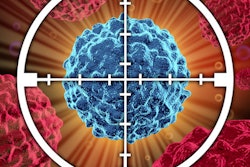
The U.S. Preventive Services Task Force's (USPSTF) 2021 CT lung cancer screening guidelines address healthcare inequities by expanding the pool of people eligible to screen -- particularly women, racial, and ethnic minorities, and poorer individuals, according to a study published October 12 in JAMA Network Open.
The 2021 recommendation is an improvement over the USPTF's 2013 guidelines, which some criticized as aggravating inequities in lung cancer diagnosis and outcomes, especially in community care settings, noted a group led by Debra Ritzwoller, PhD, of Kaiser Permanente Colorado in Aurora.
In fact, an analysis by the Cancer Intervention and Surveillance Modeling Network (CISNET) Lung Cancer Working Group found that the 2021 guideline could increase the screening-eligible population by 87%, the relative proportion of women by 96%, non-Hispanic Black individuals by 106%, Hispanics by 112%, and Asians by 61% -- and that the number of lung cancers found on screening could increase by 21%, the authors wrote.
But not everyone agrees with Ritzwoller and colleagues. In September, research published in Radiology suggested that the USPSTF's 2021 CT lung cancer screening revision perpetuates healthcare disparities for minority groups because they don't take into account elements that contribute to a higher lung cancer burden among people of color.
"Racial and ethnic minority groups face higher lung cancer morbidity and mortality, reflecting occupational and environmental exposures, socioeconomic status, neighborhood characteristics, and health behaviors," wrote a team led by Dr. Anand Narayan, PhD, of the University of Wisconsin in Madison in the Radiology study. "[Lung cancer screening] eligibility using age and pack-year criteria may exacerbate lung cancer disparities by limiting referral and access to lung cancer screening facilities among higher-risk underserved populations."
The USPSTF released the updated guidance in March, lowering the starting age for lung cancer screening from 55 to 50 and adjusting smoking history from 30 pack years to 20 pack years. Ritzwoller's group sought to estimate population-level changes the new recommendation could have by sex, race, and ethnicity, as well as sociodemographic and comorbidity factors in five community healthcare systems.
The team used electronic health data from these systems from between January 2010 to September 2019, including information from 34,528 people who had a complete smoking history and had been regularly seen within the system for 12 or more continuous months. The authors estimated the effect of the 2021 lung cancer screening guidance using Chi-squared tests.
The researchers found the following regarding how the 2021 guidance would compare with the 2013 recommendation:
- Overall screening eligibility would increase by 53.7%.
- The eligible population would include 31.5% more people aged 50 to 54 years and 52% more women.
- The proportion of eligible Asians, Native Hawaiian, or Pacific Islanders would increase by 60%; Hispanics by 67.4%; non-Hispanic Blacks by 69.7%; and non-Hispanic whites by 49%.
- It would increase eligibility in people of lower socioeconomic status by 61.1%.
- It would increase incident lung cancer diagnoses by 30%.
"This updated eligibility criteria may help reduce barriers to screening access for individuals at highest risk for lung cancer," the team wrote.
The study results show that community healthcare networks have their work cut out for them as they offer lung cancer screening to a larger pool of eligible people, according to the authors.
"Findings of the present study suggest that expanding the USPSTF recommendations for lung cancer screening eligibility is an important step in minimizing disparities in lung cancer screening, but healthcare systems will still need to invest substantial resources to tailor outreach strategies and reduce barriers to lung cancer screening uptake for those with lower socioeconomic status and for racial and ethnic minority groups," Ritzwoller's group concluded.





















